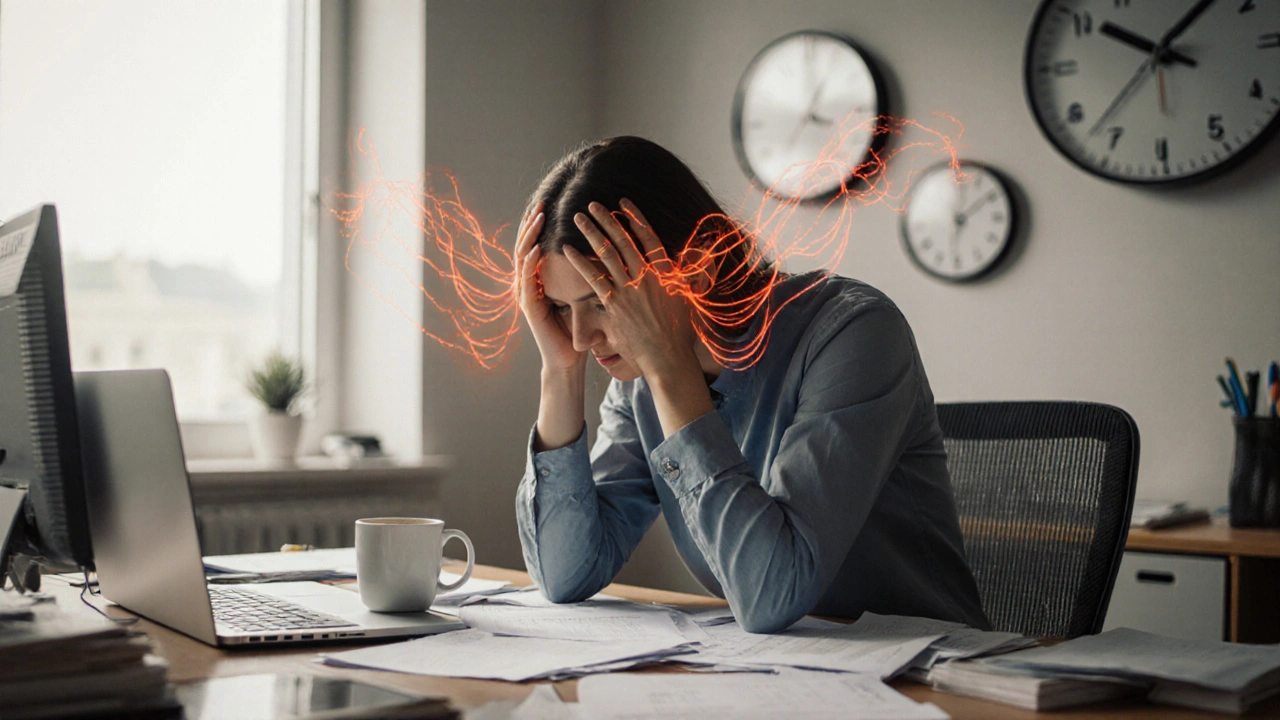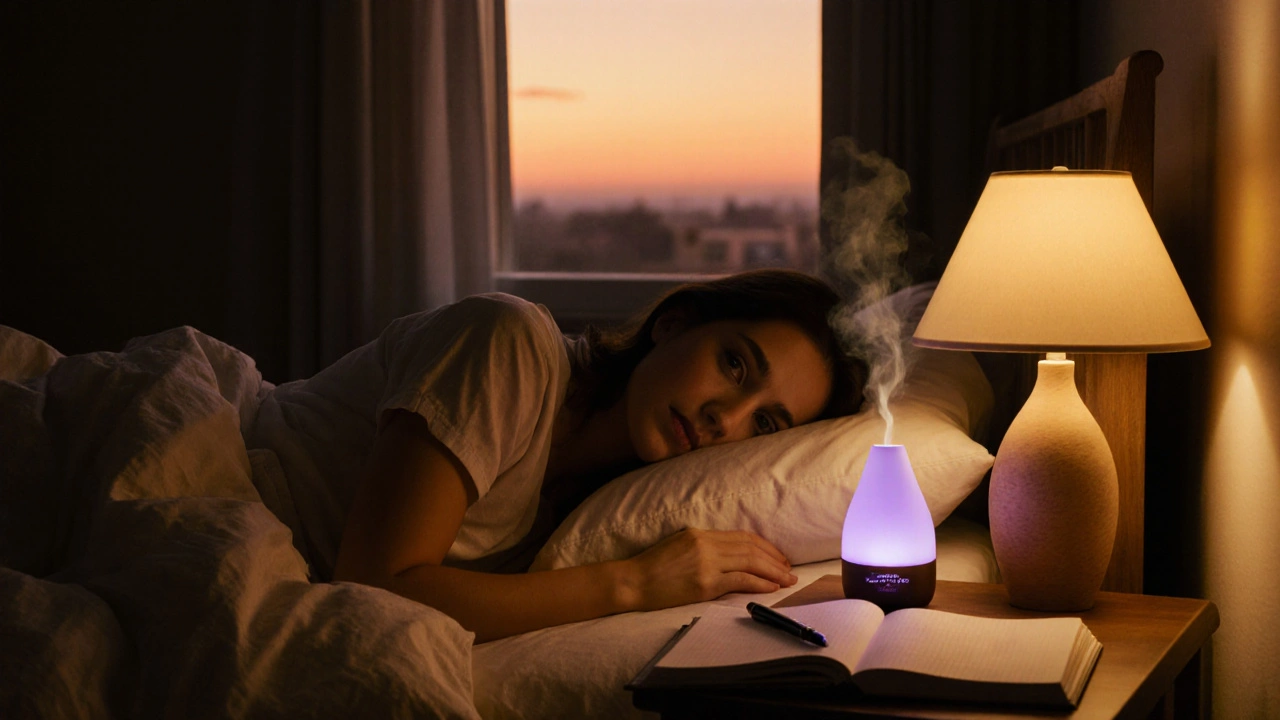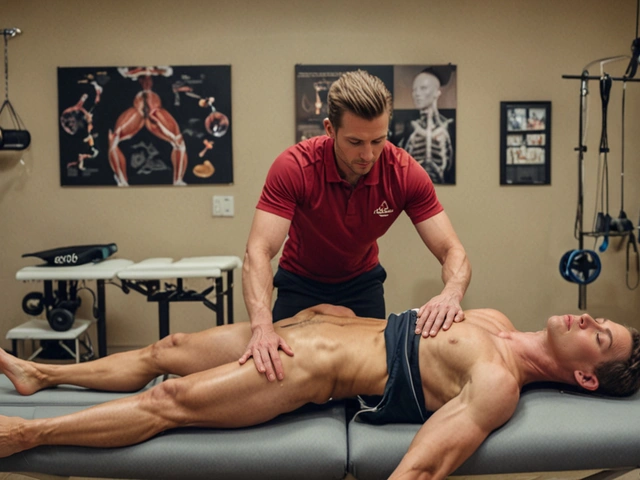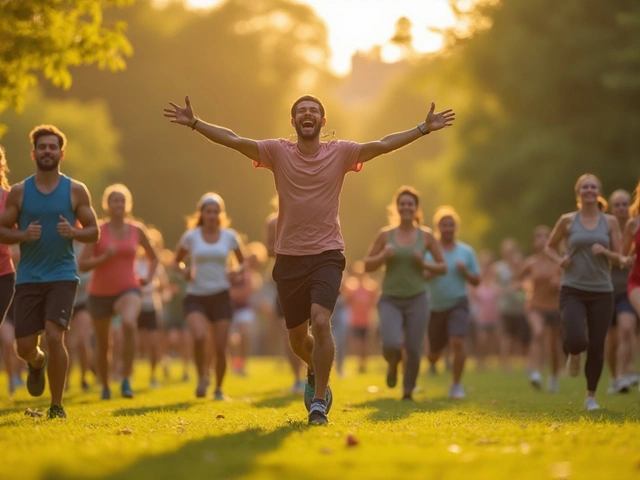
Stress Relief Technique Selector
Find the right stress relief technique for your schedule and goals. This tool analyzes your preferences to recommend the most effective practices based on scientific evidence from the article.
Ever feel like the day’s demands are pulling you in every direction, leaving you exhausted and frazzled? You’re not alone. The good news is that simple, science‑backed habits can turn that chaos into calm. This guide walks you through proven ways to cut stress and build a daily rhythm that feels balanced, not broken.
What Exactly Is Stress and Why It Matters
Stress is your body’s automatic alarm system. When you encounter a challenge, your brain releases cortisol and adrenaline, prepping you to fight, flee, or freeze. Short bursts can boost performance, but chronic activation wears down the heart, brain, and immune system. Studies from the American Psychological Association show that prolonged stress increases the risk of hypertension, depression, and even weight gain.
Understanding the mechanics helps you see why lowering stress isn’t just about feeling better-it’s a preventive health strategy.
Core Techniques That Actually Work
Below are the most reliable methods, each backed by peer‑reviewed research. Pick one or combine several to match your lifestyle.
- Deep breathing - A 5‑minute diaphragmatic breathing session can drop cortisol by up to 30% within minutes.
- Progressive muscle relaxation - Tensing and releasing muscle groups eases tension and improves sleep quality.
- Mindfulness - Mindful meditation for 10 minutes a day reduces rumination and boosts emotional regulation.
- Physical exercise - Aerobic activity releases endorphins, the brain’s natural mood stabilizers.
- Sleep hygiene - Consistent, restorative sleep resets the stress response system.
- Nutrition - Balanced meals with omega‑3s and low sugar curtail inflammation that fuels stress.
- Aromatherapy - Lavender or bergamot oils activate the parasympathetic nervous system, promoting calm.
Choosing the Right Tool for You
Not every technique fits every schedule or personality. Use the comparison table below to narrow down the best match.
| Method | Time Required | Best For | Scientific Support |
|---|---|---|---|
| Deep breathing | 5 min | Quick office breaks | Strong |
| Progressive muscle relaxation | 10-15 min | Evening wind‑down | Strong |
| Mindfulness meditation | 10-20 min | Developing focus | Strong |
| Physical exercise | 30 min | Boosting mood | Strong |
| Sleep hygiene | 7-9 h nightly | Long‑term resilience | Strong |
| Nutrition | Meal planning | Reducing inflammation | Moderate |
| Aromatherapy | 2-5 min | Instant relaxation | Moderate |
Building a Balanced Daily Routine
Integrating stress‑reduction habits into a regular schedule makes them stick. Follow this step‑by‑step plan:
- Morning reset: Spend 3 minutes on diaphragmatic breathing while you brew coffee.
- Midday move: Take a 10‑minute brisk walk or do a quick body‑weight circuit.
- Afternoon mindfulness: Use a 5‑minute guided meditation app before lunch.
- Evening unwind: Practice progressive muscle relaxation in the shower or right before bed.
- Nightly wind‑down: Dim lights, switch off screens, and apply a few drops of lavender oil to your pillow.
The key is consistency, not perfection. Even a half‑day of the routine yields measurable stress drops.
Lifestyle Factors That Amplify Results
Stress doesn’t exist in a vacuum. Two big pillars-nutrition and sleep-multiply the benefits of the techniques above.
- Balanced meals: Aim for a plate half full of veggies, a quarter protein, and a quarter whole grains. Add a handful of nuts for omega‑3s.
- Avoid caffeine spikes: Limit coffee to before 2 p.m. to protect sleep quality.
- Hydration: Dehydration can mimic anxiety symptoms; drink at least 2 L of water daily.
- Sleep schedule: Go to bed and wake up at the same times, even on weekends.
When your body receives proper fuel and rest, the nervous system recovers faster, making each stress‑relief practice more effective.
Tracking Progress and Adjusting
Measure what matters. Use a simple journal or a free app to log:
- Daily stress rating (1‑10)
- Minutes spent on each technique
- Sleep duration and quality
- Energy levels and mood notes
After two weeks, review trends. If your stress score isn’t dropping, consider swapping a technique-perhaps replace evening scrolling with a 10‑minute yoga flow.

Common Pitfalls and How to Avoid Them
- Skipping consistency: Missing multiple days resets the habit loop. Set a reminder.
- Doing too much at once: Overloading your schedule creates new stress. Start with one breath practice.
- Ignoring physical cues: If you feel dizzy during breathing, pause and return to a natural rhythm.
- Relying solely on gadgets: Apps are helpful, but the goal is internal regulation, not screen time.
Quick Checklist for a Balanced Day
- ✓ 3‑minute deep breathing in the morning
- ✓ 30‑minute walk or workout
- ✓ 5‑minute mindfulness break before lunch
- ✓ 10‑minute progressive muscle relaxation at night
- ✓ Healthy dinner with veggies + protein
- ✓ No screens 30 minutes before bed
- ✓ Lavender aromatherapy for sleep
Follow this list for a week and note how your stress levels shift. Small, steady actions are the bridge to a more balanced life.
Frequently Asked Questions
How long does it take to feel the effects of deep breathing?
Most people notice a calmer heartbeat and clearer mind within 5‑10 minutes of consistent diaphragmatic breathing.
Can I combine mindfulness with exercise?
Absolutely. Practices like walking meditation or yoga fuse movement with present‑moment attention, amplifying stress‑relief benefits.
Is aromatherapy safe for everyone?
Most adults can use essential oils safely, but people with asthma, epilepsy, or pregnancy should consult a healthcare professional first.
What’s the best time of day for progressive muscle relaxation?
Evening works best because it prepares the body for sleep, but you can use it any time you feel tension building.
How does nutrition affect stress levels?
A diet high in refined sugars spikes blood‑glucose, triggering cortisol release. Whole foods, especially those rich in omega‑3 fatty acids, help keep the stress response in check.





